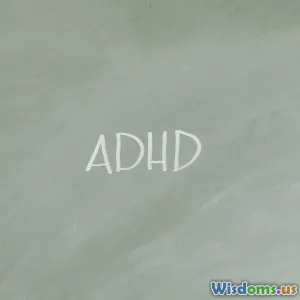
Why Your Blog Post Flops The Critical Role of Visual Storytelling
8 min read Discover why visual storytelling is the missing piece in your blog's success and how to captivate readers with compelling images and narratives. (0 Reviews)
Why Your Blog Post Flops: The Critical Role of Visual Storytelling
Every writer hopes their blog posts reach wide audiences, drive engagement, and inspire action. Yet, countless well-crafted articles flop — buried under poor visibility, short reader attention spans, or dull presentation. One often overlooked reason is the lack of visual storytelling.
Visual storytelling isn’t just about adding pretty pictures. It’s a powerful communication tool that weaves images and narratives to amplify your message, convey emotions, and anchor your readers’ attention.
Introduction: Why Words Alone Aren’t Enough
Recent studies reveal that the brain processes visuals 60,000 times faster than text. According to Social Science Research Network, content with relevant images gets 94% more views than content without graphics. Despite this, many bloggers focus heavily on well-polished prose but neglect form and structure in terms of visuals.
Think about your own reading habits — a dense wall of text can quickly drive you away. Visual storytelling bridges this gap by transforming passive reading into an immersive experience.
The Science Behind Visual Storytelling
Cognitive Impact of Images
Visuals tap directly into the brain’s limbic system, where emotions and memories reside, helping to create strong emotional resonance. Paul Martin Lester, author of Visual Communication, emphasizes how images evoke immediate feelings that reinforce the textual message.
Also, when paired with storytelling, images enable dual coding — the brain processes verbal and visual cues simultaneously, enhancing memory retention and understanding.
Attention Economy
In an online world abundant with distractions, grabbing and sustaining attention is a challenge. Visual components like infographics, videos, photographs, and well-placed graphics act as magnets. For example, BuzzSumo’s analysis of over 100 million articles found posts with compelling visuals are shared twice as often.
Why Blogs Fail Without Visual Storytelling
1. Lack of Engagement and Emotional Connection
Plain text might inform but rarely inspires. Without visuals, readers can fail to emotionally connect with your content. Incorporating visual storytelling helps tell a richer narrative by showing rather than just telling:
- Case Study: The environmental blog Beautiful Earth boosted average visit duration by 50% simply by integrating impactful ecosystem photographs and illustrated data charts that evoked urgency and care.
2. Poor Readability and Usability
Walls of text are intimidating and decrease readability. By breaking the content with visual elements, you structure the post making it more digestible. The Nielsen Norman Group reports that web users scan pages in an F-pattern — visuals can interrupt monotonous reading, directing the eye and maintaining interest.
3. Less Social Sharing and Virality
People share experiences, not plain ideas. Posts enriched with emotional visuals and stories are more likely to be shared. Stats from Buffer indicate tweets with images receive 150% more retweets than those without.
How to Incorporate Visual Storytelling in Your Blog Posts
Start With a Compelling Visual Hook
Lead your posts with a striking image, infographic, or video that introduces the idea and triggers curiosity. For instance, a blog post on urban gardening might begin with a vibrant time-lapse video of plants thriving on a city balcony.
Use Infographics to Simplify Complex Ideas
Data-heavy articles benefit greatly by translating numbers into colorful, easy-to-understand graphics. Websites like Information is Beautiful excel at this approach, turning overwhelming statistics into aesthetically pleasing narratives.
Tell Stories Through Sequential Images
Narrative arcs can be presented visually: before-and-after photos, step-by-step tutorials, or comic strips that relate to your blog’s topic.
Combine Visuals With Captions and Context
Simply inserting an image isn’t enough. Contextual captions and explanations connect the visual to your narrative, deepening understanding. Harvard Business Review highlights that captions increase image engagement by nearly 100%.
Optimize for Mobile and Loading Speed
Visuals must not hinder site performance. Use compressed images and responsive design to ensure visuals render seamlessly across devices. Slow-loading pages kill user experience and can lead to higher bounce rates.
Case Studies: Visual Storytelling Success Stories
National Geographic’s Blog
National Geographic masterfully uses stunning imagery alongside captivating storytelling to immerse their audience. Their photojournalism blogs create emotional connections with global issues that mere words struggle to convey.
Neil Patel’s Marketing Blog
Neil Patel weaves data visuals, screenshots, animations, and diagrams into marketing tutorials — simplifying SEO strategies into digestible lessons that engage and educate.
Conclusion: Visual Storytelling as Your Blog’s Secret Weapon
Blogging in 2024 demands more than writing prowess; it requires a strategic blend of compelling text integrated with evocative visuals to appeal both to the mind and senses. If your blog posts frequently flop despite good writing, look beyond words.
Harness the power of visual storytelling — combine science-backed techniques with creativity to transform your content into a memorable journey. Your audience is craving stories that captivate visually and intellectually. Meeting this expectation won’t just stop your flop; it will turn your blog into a thriving platform.
Start today by auditing your posts for visual elements, exploring free tools like Canva or Piktochart for infographics, and incorporating visuals that tell the story your words begin. You’ll see how engagement, retention, and sharing improve markedly.
Remember, successful blogging isn’t only about telling your story—it’s about showing it too.
References
- Social Science Research Network: Visual Impact on Web Engagement
- Nielsen Norman Group: How Users Read on the Web
- BuzzSumo Research on Social Shares
- Buffer Social Media Statistics
- Paul Martin Lester, Visual Communication
- Harvard Business Review: The Power of Captions
- Information is Beautiful Website
Rate the Post
User Reviews
Popular Posts





















